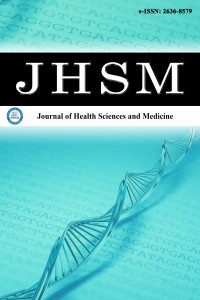1.
Angus DC, van der Poll T. Severe sepsis and septic shock. N Engl J Med. 2013;369(9):840-851. doi: 10.1056/NEJMra1208623
2.
Singer M, Deutschman CS, Seymour CW, et al. The third international consensus definitions for sepsis and septic shock (sepsis-3). JAMA. 2016; 315(8):801-810. doi:10.1001/jama.2016.0287
3.
Cederholm T, Jensen GL, Correia MITD, et.al. GLIM criteria for the diagnosis of malnutrition-a consensus report from the global clinical nutrition community. Clin Nutr. 2019;38(1):1-9. doi:10.1016/j.clnu.2018. 08.002
4.
Bouillanne O, Morineau G, Dupant C, et al. Geriatric Nutritional Risk Index: a new index for evaluating at-risk elderly medical patients. Am J Clin Nutr. 2005;82(4):777-783. doi:10.1093/ajcn/82.4.777
5.
Bauer JM, Kaiser MJ, Anthony P, Guigoz Y, Sieber CC. The mini nutritional assessment-its history, today’s practice, and future perspectives.Nutr Clin Pract. 2008;23(4):388-396. doi:10.1177/0884533608321132
6.
Stratton RJ, Hackston A, Longmore D, et al. Malnutrition in hospital outpatients and inpatients: prevalence, concurrent validity and ease of use of the ‘malnutrition universal screening tool’ (‘MUST’) for adults. Br J Nutr. 2004;92(5):799-808. doi:10.1079/bjn20041258
7.
Lee JS, Choi HS, Ko YG, Yun DH. Performance of the Geriatric Nutritional Risk Index in predicting 28-day hospital mortality in older adult patients with sepsis. Clin Nutr. 2013;32:843-848. doi:10.1016/j.clnu.2013.01.007
8.
Durán Alert P, Milà Villarroel R, Formiga F, Virgili Casas N, Vilarasau Farré C. Assessing risk screening methods of malnutrition in geriatric patients: mini nutritional assessment (MNA) versus Geriatric Nutritional Risk Index (GNRI). Nutr Hosp. 2012;27(2):590-598. doi:10. 1590/S0212-16112012000200036
9.
Haas M, Lein A, Fuereder T, et al. The Geriatric Nutritional Risk Index (GNRI) as a prognostic biomarker for immune checkpoint inhibitor response in recurrent and/or metastatic head and neck cancer. Nutrients. 2023;15(4):880. doi:10.3390/nu15040880
10.
Xie H, Tang S, Wei L, Gan J. Geriatric Nutritional Risk Index as a predictor of complications and long-term outcomes in patients with gastrointestinal malignancy: a systematic review and meta-analysis. Cancer Cell Int. 2020;20(1):530. doi:10.1186/s12935-020-01628-7
11.
Li H, Cen K, Sun W, Feng B. Prognostic value of geriatric nutritional risk index in elderly patients with heart failure: a meta-analysis. Aging Clin Exp Res. 2021;33(6):1477-1486. doi:10.1007/s40520-020-01656-3
12.
Yamada S, Yamamoto S, Fukuma S, Nakano T, Tsuruya K, Inaba M. Geriatric Nutritional Risk Index (GNRI) and Creatinine Index equally predict the risk of mortality in hemodialysis patients: J-DOPPS. Sci Rep. 2020;10(1):5756. doi:10.1038/s41598-020-62720-6
13.
Zhao D, Zhou D, Li T, Wang C, Fei S. The relationship between Geriatric Nutritional Risk Index (GNRI) and in-hospital mortality in critically ill patients with acute kidney injury (AKI). BMC Anesthesiol. 2024;24(1): 313. doi:10.1186/s12871-024-02689-1
14.
Plauth M, Sulz I, Viertel M, et al. Phase angle is a stronger predictor of hospital outcome than subjective global assessment-results from the prospective dessau hospital malnutrition study. Nutrients. 2022;14(9): 1780. doi:10.3390/nu14091780
15.
Cereda E, Pedrolli C, Zagami A, et al. Nutritional screening and mortality in newly institutionalised elderly: a comparison between the Geriatric Nutritional Risk Index and the mini nutritional assessment. Clin Nutr. 2011;30(6):793-798. doi:10.1016/j.clnu.2011.04.006

